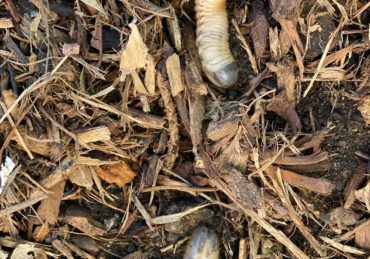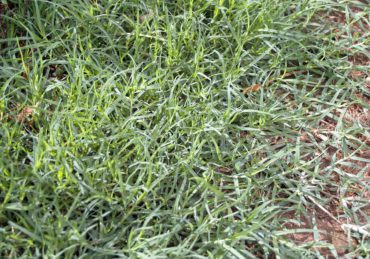Applying lime is crucial for maintaining a healthy lawn. It helps balance soil pH, enhancing nutrient availability and supporting microbial activity. The ideal times for lime application are in the fall or early spring when temperatures exceed 50°F. According to the University of Georgia Extension, soil tests are essential for determining the appropriate type and amount of lime, as well as preventing potential nutrient imbalances. For even coverage, apply lime using a criss-cross pattern. After application, light watering is recommended to activate the lime. Understanding these principles will guarantee a thriving lawn, and further insights await your exploration into superior lawn care strategies.
What Does Lime Do for Lawns?
Lime plays a critical role in maintaining ideal soil pH, which is essential for healthy lawn growth.
Recognizing the signs that your lawn requires lime can greatly enhance nutrient availability and overall vigor.
Understanding these factors can help you achieve a lush and thriving lawn.
Understanding Soil pH and Lawn Health
A balanced soil pH is crucial for fostering a healthy lawn, as it directly influences nutrient availability and microbial activity. The ideal pH range for peak grass growth is between 6.0 and 7.0.
Acidic soils, typically characterized by a pH below 6.0, can severely limit the accessibility of critical nutrients such as nitrogen, phosphorus, and potassium, leading to poor grass health manifested through yellowing leaves and stunted growth.
Applying lime effectively raises soil pH, transforming these acidic soils into a more neutral state, which greatly enhances nutrient absorption.
In addition to improving nutrient availability, lime promotes microbial activity, which is essential for overall soil fertility and the development of a robust root system in grasses.
Additionally, lime helps mitigate the toxic effects of metals like aluminum and manganese that can accumulate in highly acidic soils, thereby creating healthier lawn conditions.
Regular lime application not only helps maintain a balanced soil pH but also guarantees that vital nutrients remain accessible, contributing to a lush, vigorous lawn that thrives throughout the growing season.
Signs Your Lawn Needs Lime
How can you tell if your lawn is in need of lime? One of the primary indicators is a soil pH test result below 6.0, which signifies increased acidity that hampers nutrient availability essential for grass growth.
Poor grass health often manifests through yellowing leaves, thinning turf, and the encroachment of moss, all of which suggest an urgent need for lime application. When soil acidity rises, it restricts the absorption of key nutrients like nitrogen, phosphorus, and potassium, ultimately affecting the overall liveliness of your lawn.
Additionally, if newly planted grass struggles to establish or existing grass exhibits reduced vigor, these symptoms may indicate that lime is necessary to adjust the soil pH towards the ideal range of 6.0 to 7.0.
Regular soil testing every 2-3 years is critical in identifying pH levels and determining the need for lime. By proactively monitoring these signs, you can guarantee a healthy, lush lawn that thrives through proper nutrient absorption and balanced soil conditions.
Applying lime at the right time can greatly improve the quality and resilience of your grass, fostering a vibrant outdoor space.
When to Apply Lime to Your Lawn
Determining the ideal timing for lime application is essential for promoting a healthy lawn.
The best times to apply lime are in the fall or early spring, aligning with soil temperatures above 50°F for effective pH adjustment.
Moreover, regular soil testing every 2-3 years will help guide how often lime should be applied based on your lawn’s specific needs.
Best Time to Apply Lime for Maximum Effectiveness
Timing is essential when it comes to lime application for ideal lawn health. The best time to lime your lawn largely depends on the type of grass you have. For cool-season grasses, fall is the prime season. During this time, the freeze-thaw cycles and increased moisture during winter aid in the chemical reactions necessary for effective lime application.
In contrast, warm-season grasses benefit from lime application in late spring or early fall when temperatures are moderate and growth is vigorous.
Before applying lime, it is important to verify that the soil temperature is above 50°F, as this enhances its effectiveness in raising soil pH. Applying lime during extreme heat or drought conditions can stress the grass and negate the benefits of the treatment.
Moreover, lime takes time to alter soil pH, so it is advisable to apply it several months before planting or overseeding to achieve the best results.
A soil test prior to application will determine the appropriate amount of lime needed, guaranteeing optimal lawn health and growth.
How Often Should You Lime Your Lawn?
When is the right moment to lime your lawn effectively? The frequency of lime application largely depends on the results of soil tests. Typically, it is recommended to apply lime every 1-2 years to maintain ideal pH levels conducive to healthy grass growth. A soil pH below 6.0 usually signals a need for lime application, as this acidity can hinder nutrient availability.
For cool-season grasses, the perfect time for lime application is in the fall, while warm-season grasses benefit from lime applied in late spring or fall. Regular monitoring of soil pH is necessary; therefore, conducting soil tests every 2-3 years helps to adjust your lime application schedule based on changing soil conditions.
It is important to avoid applying lime during extreme weather, such as heavy rainfall or drought, to guarantee effective absorption and minimize runoff.
What Type of Lime is Best for Lawns?
Choosing the right type of lime for your lawn is essential for ideal health and growth. The decision often comes down to calcitic versus dolomitic lime, with each offering distinct benefits depending on soil composition.
Moreover, understanding the differences between liquid and powdered lime can help homeowners make informed choices about their application methods.
Dolomitic vs. Calcitic Lime – Which One Should You Use?
How do you decide between dolomitic and calcitic lime for your lawn? The choice primarily hinges on the specific nutrient needs of your soil, determined through a soil test.
Calcitic lime, which consists mainly of calcium carbonate, is suitable for raising soil pH and enhancing calcium availability, making it the preferred option for most lawns. It effectively neutralizes soil acidity, benefiting overall plant health.
On the other hand, dolomitic lime contains both calcium carbonate and magnesium carbonate, making it particularly important for magnesium-deficient soils. If your soil test reveals adequate magnesium levels, calcitic lime may be your best choice.
However, if magnesium is low, dolomitic lime can improve magnesium availability, which is necessary for chlorophyll production and overall plant health.
Both types of lime are effective in correcting soil acidity, but understanding the specific requirements of your lawn is essential.
Liquid Lime vs. Powdered Lime – Pros and Cons
While both liquid and powdered lime serve to improve soil pH and enhance lawn health, each has distinct advantages and disadvantages that can influence your choice.
Liquid lime is absorbed more quickly by the soil, providing faster results in raising soil pH, making it ideal for urgent corrections. Furthermore, liquid lime can be easily applied over large areas with a sprayer, offering convenience for smaller patches or quick fixes.
On the other hand, powdered lime, especially when finely ground, has a longer-lasting effect on soil pH and is often more economical for large-scale applications. Its ability to improve soil structure makes it particularly effective in heavy clay soils.
When spread with a broadcast spreader, powdered lime delivers a more uniform distribution, ensuring even coverage.
Ultimately, the decision between liquid and powdered lime should consider existing soil conditions and the urgency of application. If rapid results are sought, liquid lime may be preferable. However, for lasting improvements and larger areas, powdered lime is generally the more effective choice.
How to Apply Lime to Your Lawn
Applying lime to your lawn is a systematic process that begins with conducting a soil test to determine pH levels and lime requirements.
Once the necessary calculations are made, selecting the appropriate spreader and applying the lime in a crisscross pattern guarantees even distribution.
Finally, lightly watering the lawn after application activates the lime and aids in nutrient absorption.
Step 1 – Conduct a Soil Test
Before applying lime to your lawn, conducting a soil test is essential to assess its pH level accurately. An ideal soil pH level for optimal grass health typically ranges from 6.0 to 7.0. Testing your soil allows you to determine whether lime application is necessary and how much is needed.
To conduct a thorough soil test, collect samples from multiple areas of your lawn. Different sections may exhibit varying pH levels, so a representative analysis is critical. Once collected, send your samples to local extension services or accredited laboratories, which can provide detailed reports outlining your soil’s composition and specific lime requirements. This helps you avoid the pitfalls of over-application or under-application of lime.
It is advisable to perform soil testing every 2-3 years to monitor changes in pH and adjust your lime applications accordingly. While at-home pH tests can be convenient, they may lack the all-encompassing insights provided by professional testing services.
Step 2 – Calculate the Right Amount of Lime
With a soil test completed and the pH levels assessed, the next step involves calculating the appropriate amount of lime to apply to your lawn.
Start by referring to your soil test report, which specifies the lime requirement in pounds of pure calcium carbonate needed to achieve the desired pH level. To calculate how much lime to apply, use the formula: Liming Requirement ÷ Calcium Carbonate Equivalent (CCE) percentage, which accounts for the purity of the lime product.
If the calculated amount exceeds recommended values, it is advisable to split the application into two separate treatments. This approach helps prevent over-liming, which can lead to nutrient imbalances in the soil.
For ideal results, aim to spread the lime evenly across the lawn using a broadcast spreader, ensuring it is incorporated into the top 5 inches of soil.
Monitoring your lawn’s response to the lime application is essential. Conduct follow-up soil tests after 6-12 months to reassess pH levels and make necessary adjustments for future applications.
Taking these steps will promote a healthier, more vibrant lawn.
Step 3 – Choose Your Spreader (Drop Spreader vs. Broadcast Spreader)
Choosing the right spreader is vital for effective lime application, as it directly impacts the uniformity and efficiency of the process. Two common types of spreaders are drop spreaders and broadcast spreaders, each offering distinct advantages depending on your lawn’s size and layout.
A drop spreader applies lime in a straight line directly to the soil, allowing for precise control over the amount used. This method minimizes the risk of over-application, making it ideal for smaller, intricate areas. It is advisable to set the spreader to release half the recommended amount initially, followed by a second pass in a crisscross pattern to guarantee even coverage.
Conversely, a broadcast spreader distributes lime over a wider area, making it suitable for larger lawns. However, careful adjustment is necessary to achieve even coverage and avoid missed spots.
Regardless of the type of spreader chosen, it is important to regularly calibrate the equipment according to the manufacturer’s guidelines. Typically, the maximum application rate should not exceed 50 lbs per 1,000 sq ft at one time, maintaining the best health of your lawn while effectively applying lime.
Step 4 – Apply Lime in a Criss-Cross Pattern for Even Coverage
Applying lime in a criss-cross pattern is a highly effective technique for ensuring even coverage across your lawn, which is essential for promoting uniform pH adjustment.
This method involves spreading half of the lime in one direction, such as north to south, and then applying the remaining half in a perpendicular direction, like east to west. By utilizing this criss-cross pattern, you can greatly reduce the risk of missed spots and over-application in specific areas, which can lead to nutrient imbalances or excessive alkalinity.
To achieve ideal results, employing a broadcast spreader is recommended, as it allows for efficient and consistent lime distribution, especially over larger lawn areas.
Always adhere to the recommended lime application rates based on your soil test results to maintain soil health and prevent over-liming.
Step 5 – Water Your Lawn After Applying Lime
Watering your lawn lightly after applying lime is an important step in maximizing its benefits and guaranteeing effective soil amendment. This practice not only activates the lime but also helps prevent potential leaf burn caused by concentrated product exposure.
By lightly watering your lawn shortly after application, you promote the absorption of lime into the soil, enhancing its effectiveness in raising soil pH levels.
Moreover, this moisture aids in the even distribution and incorporation of lime into the topsoil, which is essential for ideal lawn health. Regular irrigation following lime application supports grass growth and development, as lime improves nutrient availability in the soil.
It is imperative to avoid heavy watering immediately after applying lime; instead, a gentle watering is sufficient. Excessive water can lead to runoff or leaching, which diminishes the lime’s effectiveness.
Consequently, aim for a light, even mist to guarantee the lime is properly activated and integrated into the soil. By following this step, you can greatly enhance the health and vigor of your lawn, setting the foundation for a lush, green landscape.
Common Mistakes to Avoid When Applying Lime
When applying lime to your lawn, avoiding common mistakes is crucial for ideal results.
Key missteps include failing to test your soil beforehand, applying excessive amounts of lime, and choosing the wrong time of year for application.
Applying Too Much Lime
Although lime application is fundamental for maintaining soil health, excessive use can lead to detrimental effects on your lawn. Over-liming can raise soil pH excessively above 7.5, resulting in nutrient deficiencies that impair grass growth. This imbalance can manifest as yellowing grass, poor growth, and reduced turf density, indicating serious nutrient absorption issues.
To prevent over-liming, conducting thorough soil testing is essential prior to application. Soil tests provide valuable insights into the existing pH levels and nutrient content, allowing for precise lime application tailored to your lawn’s specific needs. Liming should generally occur every 1-2 years based on these soil test results; making annual applications without testing can inadvertently lead to high alkalinity, harming your lawn’s health.
Additionally, be mindful of environmental conditions when applying lime. Extreme weather, such as frost or high heat, can disrupt the chemical reactions necessary for effective pH adjustment, further exacerbating potential issues.
Not Testing Your Soil First
How can homeowners guarantee their lawn receives the right care? One of the most vital steps is conducting a soil test before applying lime. Skipping this essential process can lead to incorrect pH adjustments, potentially worsening existing nutrient deficiencies and harming grass health.
A soil test provides important insights into the current pH levels, enabling homeowners to determine the precise amount of liming materials needed for effective soil amendment.
Without a proper soil test, the risk of over-liming increases, which can excessively raise soil pH and create nutrient imbalances that stifle grass growth. It is advisable for homeowners to conduct soil testing every 2-3 years to monitor pH changes and adjust lime applications accordingly.
Neglecting this step not only leads to ineffective treatments but also results in wasted time and resources, as lime applications may fail to address the actual acidity issues present in the lawn.
Applying Lime at the Wrong Time of Year
Neglecting the timing of lime application can greatly undermine its benefits, particularly if homeowners apply it during inappropriate seasons. The ideal time for liming varies between cool-season and warm-season grasses. For cool-season grasses, fall is perfect, while warm-season grasses should be treated in late spring or fall to avoid disruption of their growing cycle.
Applying lime during extreme heat or drought can hinder its effectiveness, as moisture is crucial for the chemical reaction. Similarly, liming during frost or when the ground is frozen prevents proper interaction with the soil, delaying necessary pH adjustments.
Furthermore, homeowners should avoid liming just before heavy rainfall, which can lead to runoff and insufficient soil integration.
Importantly, conducting a soil test is essential prior to liming. This test helps determine the appropriate amount of lime needed, preventing over-application that may result in excessive alkalinity or insufficient pH correction.
Maintaining Your Lawn After Lime Application
After applying lime to your lawn, it is important to understand how long it takes for the lime to effectively alter soil pH and enhance nutrient availability.
Furthermore, many homeowners wonder whether lime and fertilizer can be applied simultaneously to optimize lawn health.
Addressing these questions will help guarantee your lawn thrives in the months following lime application.
How Long Does It Take for Lime to Work?
When can you expect to see the benefits of lime application on your lawn? Lime can take anywhere from a few weeks to several months to considerably impact soil pH levels and enhance nutrient availability.
The time frame for noticeable improvements depends on several factors, including soil type, the fineness of the lime particles, and existing moisture levels.
For best results, it is advisable to conduct a soil test at least 6 to 12 months after application to evaluate changes in soil pH and determine if additional treatment is necessary.
Regular monitoring of soil conditions and grass health will help you observe improvements in grass vigor and color following lime treatment.
During this period, maintaining a consistent watering schedule and minimizing heavy foot traffic on the lawn can further support grass recovery.
Meeting your lime needs effectively guarantees that the grass can better absorb essential nutrients, leading to a healthier and more vibrant lawn.
Patience is key, as the positive effects of lime application unfold gradually, aligning with your lawn care goals.
Can You Apply Lime and Fertilizer Together?
Can you effectively combine lime and fertilizer in your lawn care routine? While it is feasible to apply lime and fertilizer simultaneously, it is generally recommended to apply lime first. This approach allows the lime to adjust the soil pH before introducing fertilizer, enhancing nutrient absorption.
High soil acidity can limit fertilizer effectiveness, making soil testing essential prior to treatment to determine the specific needs for both lime and fertilizer.
The chemical reaction of lime is gradual and can take several months to fully impact soil pH. Consequently, patience is important after liming; relying on fertilizers too soon can lead to nutrient lock-up if the soil pH remains too low.
This can adversely affect grass health and growth.
Conclusion
In summary, lime application is an essential aspect of effective lawn care, enhancing soil pH and promoting nutrient availability for ideal grass growth. Timely application, particularly in the fall, maximizes the benefits derived from lime. Selecting the appropriate type of lime and employing proper application techniques further contribute to successful lawn maintenance. By avoiding common mistakes and maintaining the lawn post-application, a vibrant and healthy outdoor space can be achieved, ensuring long-term sustainability and beauty.





